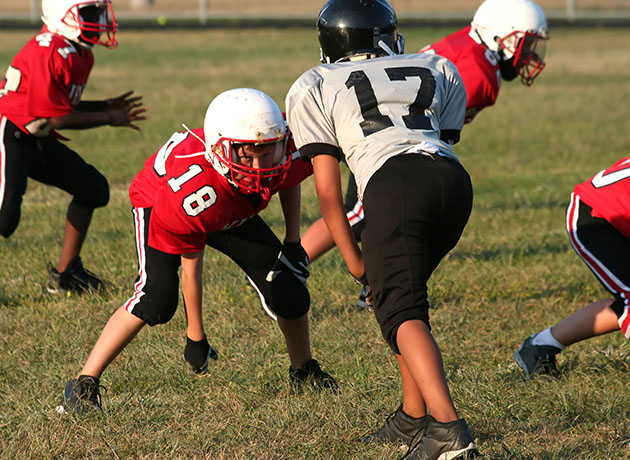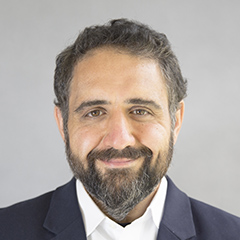Five years ago, my colleague Bill Reeves and I were junior staff at Mathematica Policy Research, and we were eager to contribute to the company’s offerings. Keeping Mathematica’s mission of improving public well-being in mind, we decided to tackle the topic of brain injury and youth football. We’re avid football fans, but like parents, coaches, pro athletes, and public health officials, we’re concerned about the effects of repeated hits to the head that football inevitably brings. By developing and rigorously evaluating interventions designed to mitigate these effects, we’re seeking to add to the evidence base on the relationship between football and brain injury. This would help parents and other stakeholders to make informed decisions about the policies and techniques that could keep young football players safe while letting them enjoy the sport.
Youth who play football can absorb hundreds of hits to the head in one season. The effects of these impacts could increase exponentially if youth go on to play football in high school and college, which many of them do. Despite this high level of exposure and the suspected adverse effects on the brain, scientific inquiry into this area is relatively new.
The public has begun to respond to the issue. In 2013, Pop Warner reported a drop in its youth football participation by 9.5 percent from 2010-2012, citing the fear of head injuries as the top cause. Many have speculated that if the decline continues, the sport would cease to exist at the youth level. More recently, USA Football announced major rule changes to make the game safer. Although some of these modifications seem like common sense, they are not supported by any evidence.
In November 2015, the American Academy of Pediatrics (AAP), an organization consisting of over 66,000 pediatricians, released a policy brief that describes the current evidence on injuries in football.
The AAP statement confirmed that, compared with other sports, football probably poses the greatest risk of concussion, but the incidence of concussion is relatively infrequent, and most injuries are bumps and bruises. The AAP brief summarized its findings with seven policy points, one of which suggests that a delay in tackling until athletes are older will probably result in fewer injuries. However, it is not clear that this approach reduces the risk for greater injury. Unlike younger players, high school and college players are exposed to greater “acceleration forces,” and if players do not experience contact until later in their careers, they may not have learned how to tackle or how to absorb tackles in a way that would mitigate these forces. So the question of the best time to begin tackling is an open one.
Bill and I, along with a larger team at Mathematica, are excited about our recent partnership with the Centers for Disease Control and Prevention (CDC) to study youth football and tackling. In a unique randomized trial, we’ll evaluate a novel technique known as shoulder-style tackling. Our team will report on the number and force of head impacts sustained by athletes by using sensors in the mouth guards of players, as well as the number of reported concussions. We’ll also report on the number and force of head impacts and concussions sustained in flag football. A recent study suggested that youth playing flag football may be at risk for greater injury than youth who play tackle football.
As Bill and I reflect on the past five years, what stands out the most is the opportunity to contribute to an area of policy research so desperately in need of an evidence base for decision making. We will continue to work toward a future in which only rigorous interventions are used to ensure that youth who play contact sports are safe and that all stakeholders involved have the information they need to make sound decisions.
Learn more about our research on concussion prevention.




